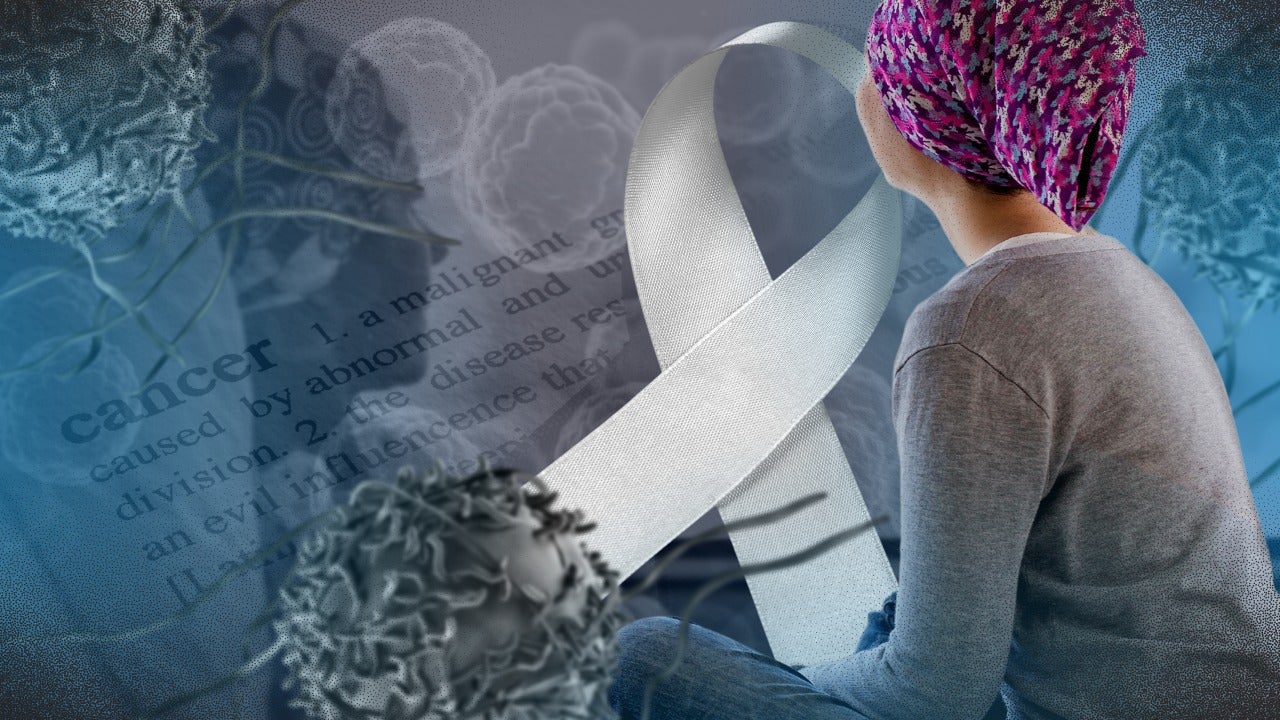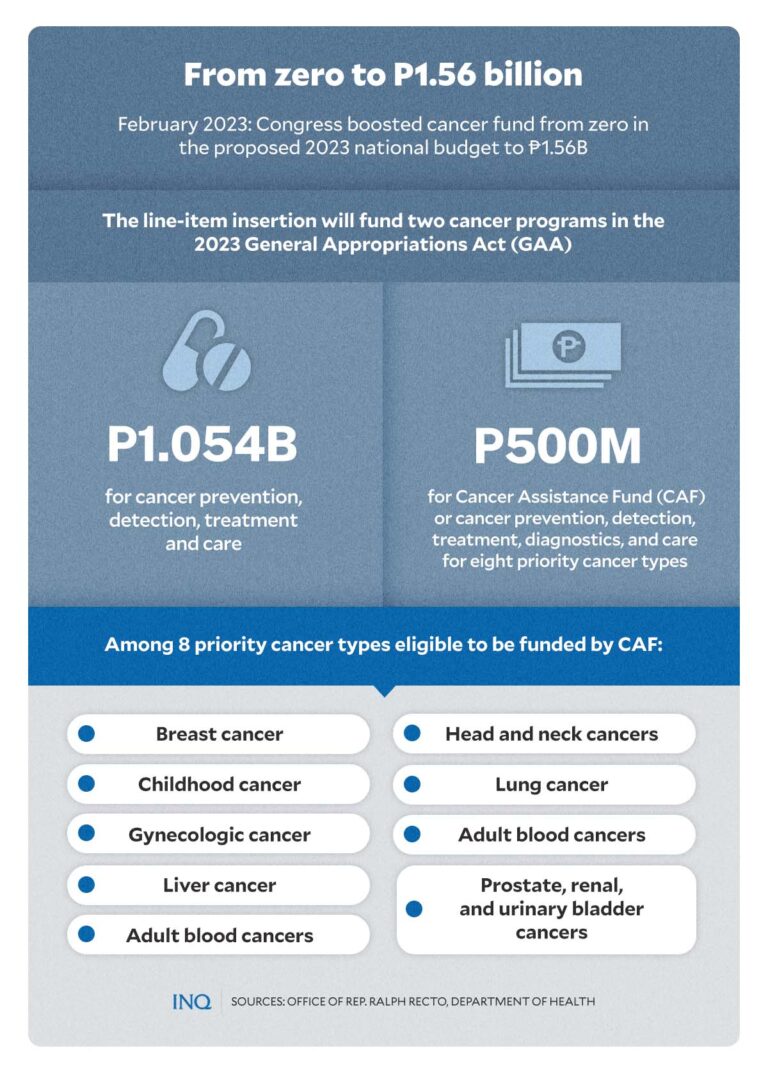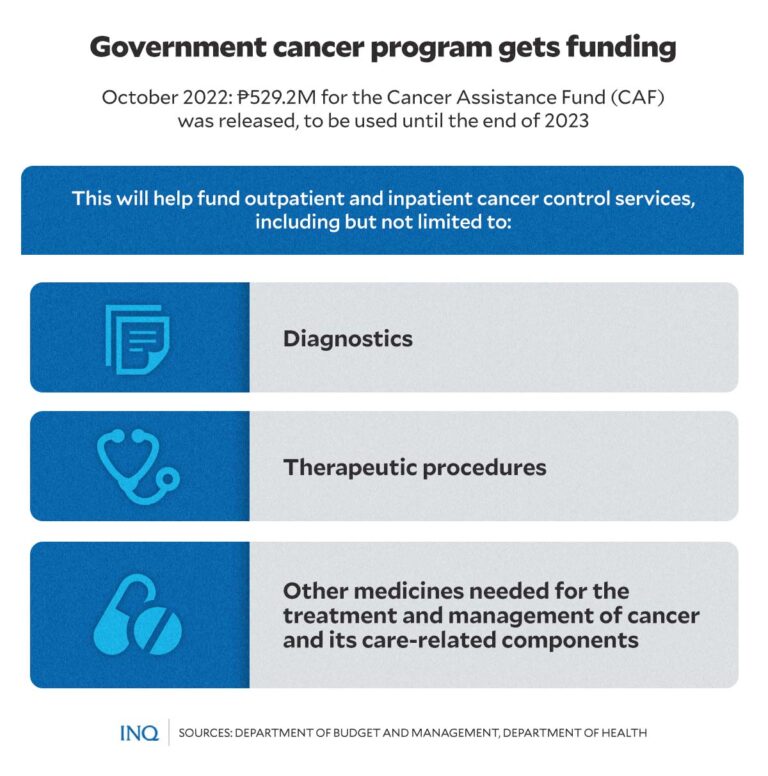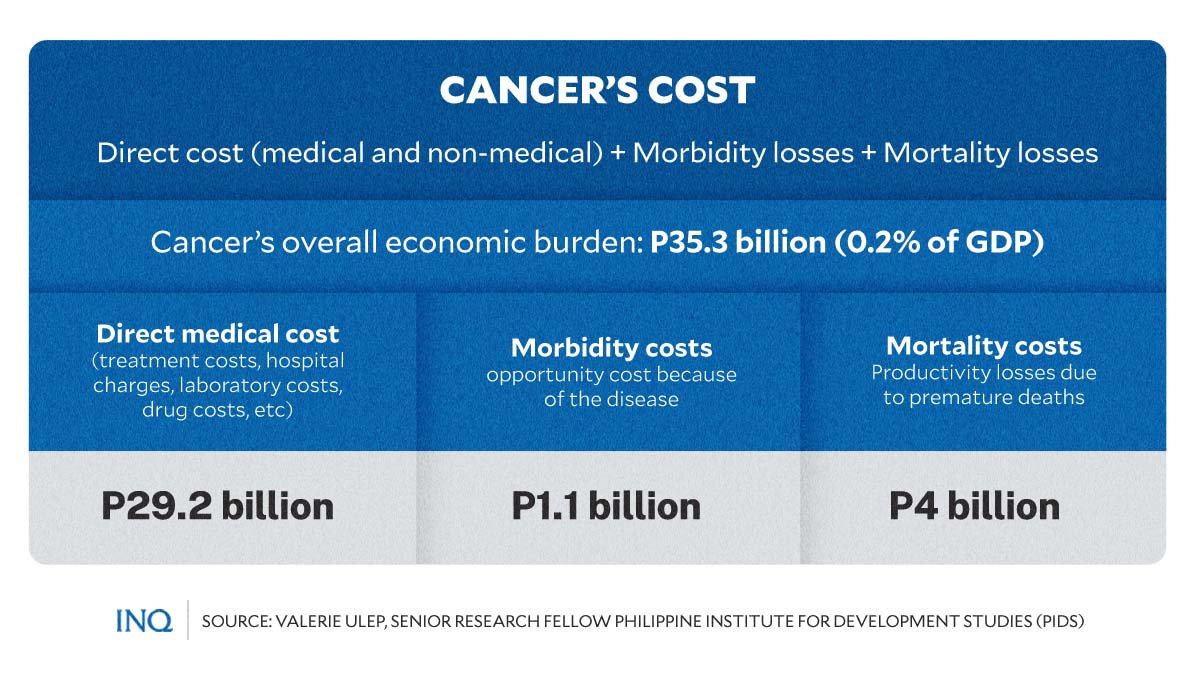To aid more PH cancer patients gov’t urged to revisit programs, boost cancer funds
(Last of two parts)
MANILA, Philippines—To further bridge the gap between the many indigent cancer patients and the available innovative cancer drugs and treatments in the Philippines, a breast cancer advocate is proposing to revisit the government’s cancer program and increase the country’s cancer funds.
Global innovations in the medical field during the past years have made the “Big C” treatable and preventable. These advances have brought new treatments for cancer to millions of patients worldwide.
Various new cancer treatments have been introduced and made accessible for patients in many countries, including the Philippines. Among these is a type of breast cancer treatment called targeted therapy, which uses targeted drugs or medicines that work differently than standard chemotherapy drugs.
READ: Targeted therapy makes waves as brightest hope for cancer treatment
Article continues after this advertisementAccording to Kasuso Philippines Foundation for Breast Care Inc. volunteer Aileen Antolin, targeted therapy—and targeted drugs such as trastuzumab—have been an available treatment option for breast cancer patients since 2011 and resulted in “great success” in the prognosis of patients who received the treatment.
Article continues after this advertisementHowever, several factors, such as cost and the process of including cancer drugs in the government’s cancer medical assistance program, limit the access of many breast cancer patients—especially the poor—to innovative treatments.
READ: Roadblocks keep better treatment out of breast cancer patients’ reach
“We can say that not making it available to patients is also depriving [them], especially since most of the patients who will benefit from it are poor and are availing programs under the public healthcare system,” Antolin said in a recent radio interview.
“Those who have money can purchase cancer medicines overseas. Meanwhile, indigent patients who are reliant on the public health care system can’t do anything,” she said, adding that even doctors’ hands are often tied.
In a statement last February, the National Kidney and Transplant Institute (NKTI) announced that 23 public hospitals have started offering free targeted therapies for breast cancer patients who cannot afford the required 18 treatment cycles, which cost from ₱300,000 to ₱450,000.
“Options for treatment include a subcutaneous injection that takes about 5 minutes to administer or a three-hour intravenous administration that also requires an additional two hours or so for preparation,” said Dr. Marvin Mendoza, head of the oncology section at the NKTI.
However, only 200 patients will be accommodated nationwide for the free cancer treatment due to the limited budget for the treatment program.
READ: More funding, assistance bring cancer patients closer to recovery
Breast cancer assistance program
In 2011, the Department of Health (DOH) introduced the Breast Care Medical Access Program (BCMAP), which aimed to provide subsidized medicine for breast cancer patients under a negotiated price for national hospitals.
“Help improve the cure and survival rates of cancer patients and alleviate their financial hardships in paying for costly cancer treatment, DOH will target the most cost-effective and commonly used adjuvant chemotherapy for Stage I-IIIb breast cancer in women,” DOH explained.
“The free medicines access program for cancer is not only meant to provide ready access to cancer medicines but to promote early-screening and cancer awareness among Filipinos, emphasizing that detecting, treating and managing cancer in the early stages improves the overall prognosis and survival rates for patients,” it added.
However, a 2019 BMC Health Services Research study stressed that access sites under the BCMAP and medicine stocks remain limited.
According to the health department, patients can access medicines under the BCMAP in four pilot access sites and two expansion sites, namely:
- East Avenue Medical Center
- Jose Reyes Medical Center
- Rizal Medical Center
- Philippine General Hospital
- Amang Rodriguez Memorial Medical Center
- Bicol Regional Training and Teaching Hospital
DOH also noted that a fully eligible cancer patient should be referred by their surgeon or oncologist to the Philippine Cancer Society. The patient and an attending physician must also accomplish and submit the required documents to receive the continuous free supply of cancer medicines.
More cancer programs
In terms of legislation, Republic Act No. 11215, or the National Integrated Cancer Control Act (NICCA), was enacted in 2019 to provide medical and financial assistance to cancer patients, cancer survivors, and their families.
The law features two cancer assistance programs: the Cancer and Supportive-Palliative Medicines Access Program (CSPMAP) and the Cancer Assistance Fund (CAF).
The CSPMAP provides free medicines—supportive and palliative—for patients with different types of cancer. Some types of cancer covered by CSPMAP are breast, childhood, lung, prostate, bladder, kidney, blood, head, neck, thyroid, gynecologic, and gastrointestinal.
Data from the DOH showed that CSPMAP access sites are scattered across Luzon, Visayas, and Mindanao—with at least one access site per region.
The National Integrated Cancer Control Act features two significant programs, namely the Cancer and Supportive-Palliative Medicines Access Program (CSPMAP) and the Cancer Assistance Fund (CAF). The CSPMAP offers free medication to cancer patients and their families, pic.twitter.com/UmLjHuuvEZ
— Department of Health Philippines (@DOHgovph) April 20, 2023
Meanwhile, the CAF focuses on offering financial assistance for cancer treatment, cancer medicines, necessary diagnostic tests, therapeutic procedures, and laboratory services of patients diagnosed with either of the eight identified priority cancer types:
- breast cancer
- childhood cancer
- gynecologic cancer
- liver cancer
- adult blood cancers
- head and neck cancers
- lung cancer
- prostate, renal, and urinary bladder cancers
The DOH said patients can access CAF through 31 sites nationwide.
Revisit, re-evaluate programs
While specific cancer assistance programs currently exist in the country, Antolin stressed the need to revisit and evaluate such programs to determine whether the programs are effective in aiding the needs of many Filipino cancer patients.
“The first practical step that I can see [is that] we should revisit and evaluate how effective these [cancer support] programs are. I would like to appreciate how many actually benefitted [from these programs] and how [much] were actually spent in terms of budgeting,” she said.
“It would be nice if government policies are based on actual data so that we can see if the programs are effective [and we can pinpoint] the [aspects and areas] that needed adjustments—[such as] the procurement [of cancer medicines],” she added.
Antolin also expressed hopes that the government is open to feedback on its cancer assistance programs. She noted that her organization has been receiving information about the situation of cancer patients at the grassroots level.
“We have scenarios wherein we get inquiries from those in Mindanao, asking us how can they be included in the cancer program since all 50 slots have already been filled as early as January,” she said.
“How about the other diagnosed patients [in those areas]? Where will they go for [assistance for] their treatment? This [is an example of the] grassroots-level information we’re getting,” she added.
While Antolin, as well as her organization, recognized that a lot has improved in terms of addressing the burden of cancer in the country. However, she clarified that much work still needs to be done to improve the accessibility of cancer medicine, treatment, and assistance.
READ: More needs to be done: Better breast cancer treatment, care pushed
“[W]e’re hoping that we will have a mechanism to check how effective these programs are since our goal is to provide timely and adequate treatment to more cancer patients,” she said.
“A program will remain to be just a program if it is not implemented effectively—and we are very much aware of what is happening in terms of the experienced of patients who are availing [these cancer] programs,” she continued.
Push for bigger budget
Antolin likewise pushed for an additional budget allocated for the country’s CAF. Given the number of breast cancer patients in the country, she noted that the current funding for CAF—which covers other types of cancer—is insufficient.
In the Philippines, breast cancer is the leading type of cancer and is the most common cancer among women of all ages. Estimates by the Global Cancer Observatory (Globocan) showed that there were 27,163 cases of breast cancer recorded in the country in 2020, while 9,926 Filipino women died of the disease.
Previous data by the Department of Health (DOH) showed that 3 in every 100 women in the country would be diagnosed with breast cancer in their lifetime.
Other advocates, such as the Cancer Coalition and Citizen’s Watch, have also previously urged Congress to increase its roughly ₱ 1 billion annual budget for the anti-cancer program of the DOH.
From being excluded in the 2023 General Appropriations Act (GAA), Congress last February restored the government funds for cancer to a total of ₱1.56 billion.
Of the ₱1.56 billion that will be lodged under the DOH, ₱1.054 billion will subsidize cancer prevention, detection, treatment, and care, in line with Republic Act No. 11215 or the National Integrated Cancer Control Act—which aims to prevent cancer and improve cancer survivorship, and make cancer treatment and care more equitable and affordable for all.
The remaining ₱500 million will go to the Cancer Assistance Fund (CAF), which will be used for cancer prevention, detection, treatment, diagnostics, and care for the eight priority cancer types identified by the DOH.
On top of the restored cancer funds, a joint memorandum circular outlining the guidelines for using the CAF released last year stated that ₱529.2 million worth of funds for cancer patients will remain valid until the end of 2023.
READ: Fighting cancer in PH: Hope raised for P10B additional funds
According to Jan Llevado, chief of the DOH’s cancer control and mental health division, around P1.67 billion has been earmarked this year for the health department’s CSPMAP.
But Llevado said only about 3,000 patients would benefit from this, as the DOH would need at least P2.7 billion in CAF funds to cover all 18,015 registered cancer patients for this year alone.
She said a patient enrolled in a hospital identified as an access site might get free medicines worth up to P150,000 a year. These can cover one complete treatment cycle lasting up to 8 months.
However, due to limited funding, only some 20 percent of the reported 153,751 new cancer patients would be given free medicines under the program.
READ: Include more innovative cancer meds in National Formulary, gov’t urged
A study published in 2018 in Acta Medica Philippina—a peer-reviewed general medical and health science journal published by the University of the Philippines (UP)—found that 40.6 percent of cancer patients’ families experienced financial toxicity—or financial problems—due to the high cost of medical care.
The researchers also found that the mean combined out-of-pocket expenses of respondents at 3 and 12 months after diagnosis amounted to ₱181,789.00
READ: ‘Financial toxicity’ hurting PH cancer patients
Previously published statistics also showed that at least 7 in 10 cancer patients in the country “drop out of treatment regimen” due to lack of funds.
READ: PH cancer patients lack access to preventive screening, costly treatment
TSB
RELATED STORIES:
Access to new cancer medicines remains limited for poor patients—experts
Bigger cancer budget equals better treatment, fewer deaths in PH






